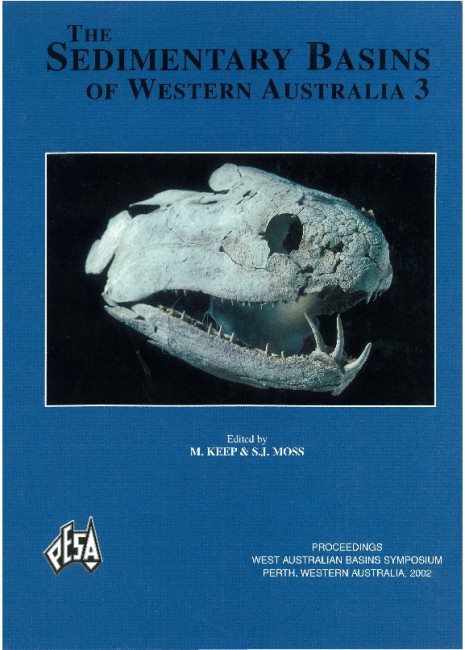Publication Name: The Sedimentary Basins of WA
Authors: A.A. Bal, J.D. Prosser & T.J. Magee
Publication Volume: 3
Date Published: December 2002
Number of Pages: 42
Reference Type: Book Section
Abstract:
The Echo-Yodel accumulation occurs within high reservoir quality fluviatile sandstones of the E Unit of the Triassic Mungaroo Formation. Porosities average approximately 21%, with permeabilities generally greater than 1 Darcy and occasionally as high as 20 Darcies. Seismic data have limited value when resolving detail at the intra-reservoir scale, whereas borehole image logs have proved highly valuable data sets for understanding the 3Dnature of the reservoir at scales necessary for modelling and development-well planning.
Image facies are highly analogous to a sedimentary lithofacies in that they incorporate information about both
interpreted lithology and the contained rock fabric. After the removal of tectonic tilt, the true sedimentary dip data and image facies are juxtaposed with core photographs, core descriptions and openhole logs, and finally
interpreted as core calibrated lithofacies.
Reconstruction of within-channel bars, macroforms, channels and channel complexes is achieved through a
detailed analysis of palaeocurrent and facies data, following the principles of architectural element analysis.
This resulted in the identification of three field-wide bounding surfaces and at least two surfaces that could be
traced through 3 wells. These surfaces bound units with characteristic sandstone architecture that can be explained in terms of the stream equilibrium profile concepts, which controls the creation and destruction of subaerial accommodation space.
The laterally extensive and high net-to-gross Lower E3 Unit is a consequence of a relative low stand of the steam
equilibrium profile. During this low stand, intermittent tectonism modified the regional slope and stream equilibrium profile relative to the actual profile, causing a change in fluvial belt orientation and minor incision.
Lower E2 shales develop because the stream equilibrium profile is high resulting in increasing accommodation
space and a consequent change in LEI fluvial style towards less lateral reworking and more stacked channel complexes formed by vertical aggradation and greater preservation of floodplain fines.


